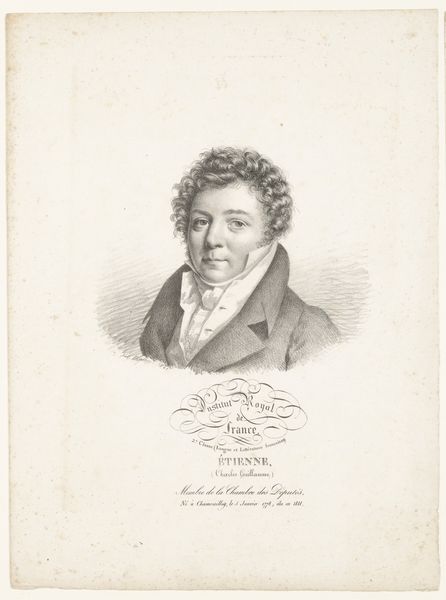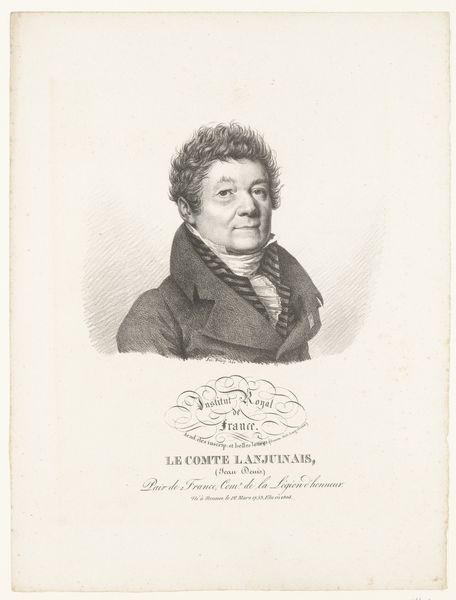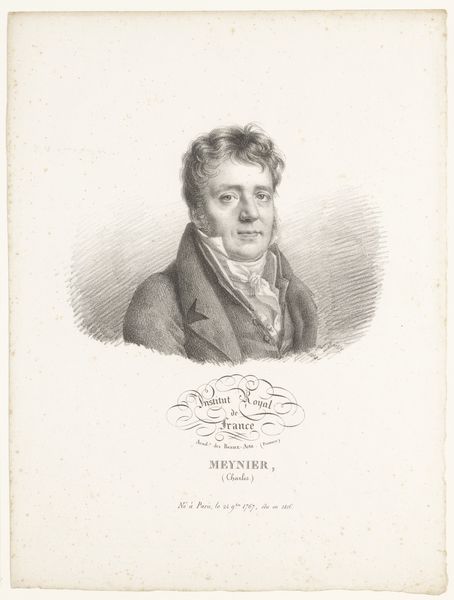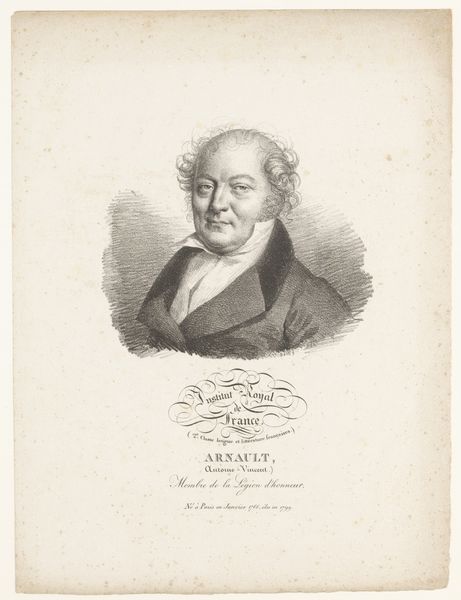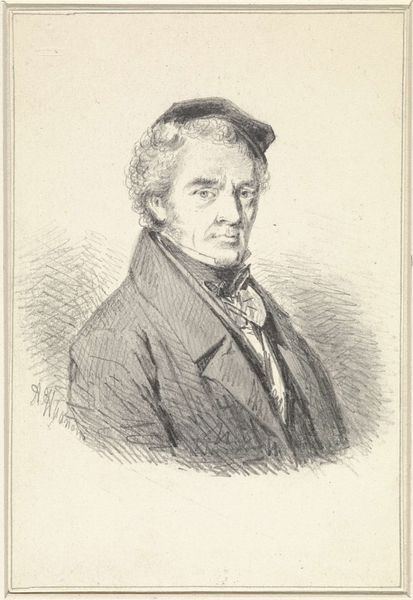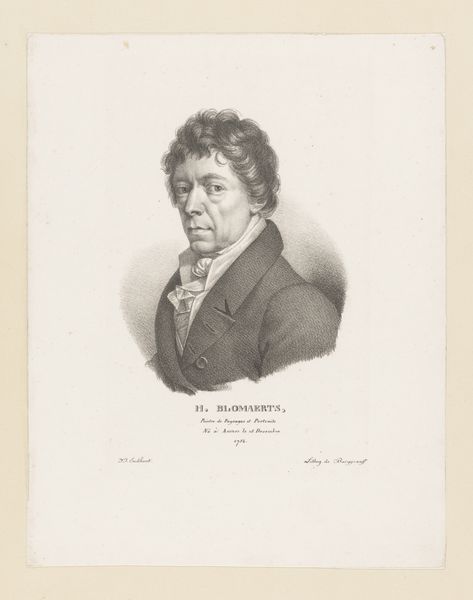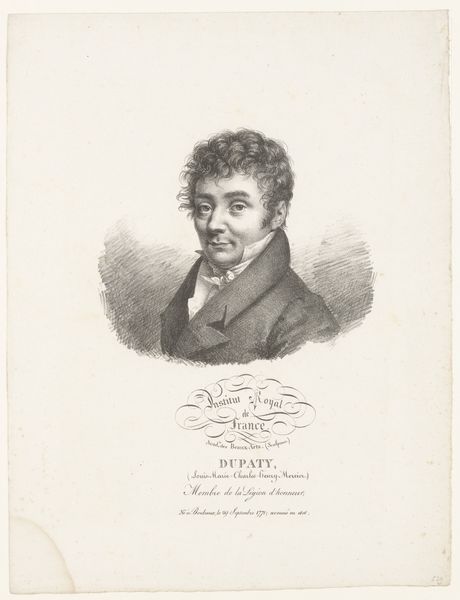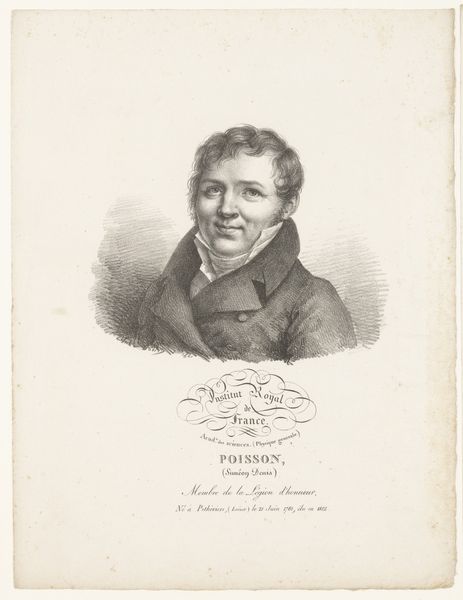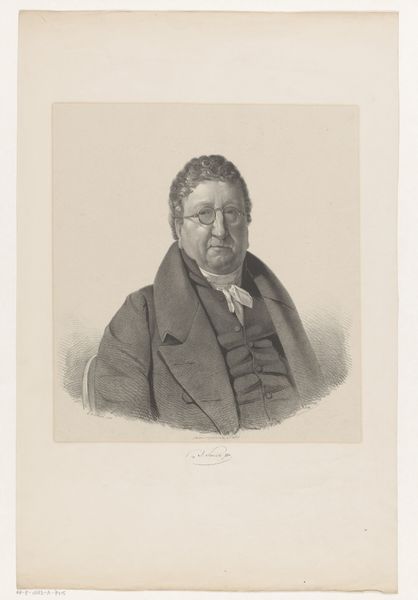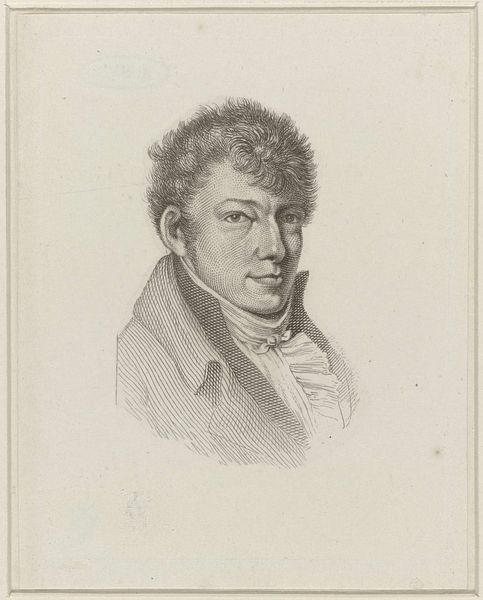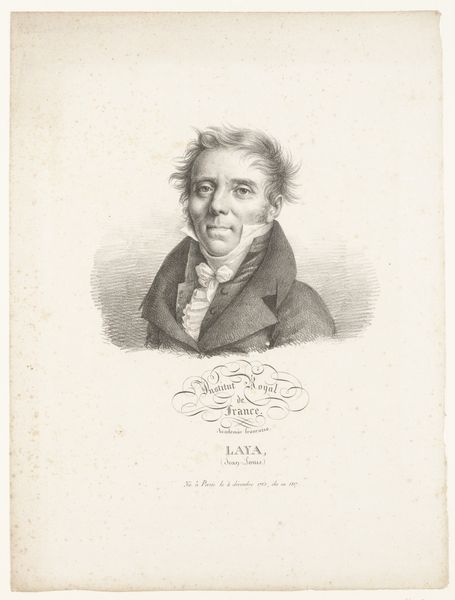
drawing, graphic-art, print, pencil, engraving
#
portrait
#
pencil drawn
#
drawing
#
graphic-art
#
neoclacissism
# print
#
pencil sketch
#
old engraving style
#
pencil drawing
#
pencil
#
portrait drawing
#
academic-art
#
engraving
Dimensions: height 328 mm, width 250 mm
Copyright: Rijks Museum: Open Domain
Curator: We're now looking at a piece titled "Portret van de toneelschrijver Victor-Joseph Étienne de Jouy" by Julien-Léopold Boilly, created around 1820. It's rendered using engraving, pencil and other graphic-art techniques. Editor: It’s a striking image. I'm immediately drawn to the texture created by the pencil hatching and the very apparent materiality of the print itself. You can almost feel the grain of the paper. Curator: Indeed. The academic-art style is evident in the meticulous rendering of form. Notice how Boilly employs line and shadow to articulate Jouy's features. There’s a classical restraint, despite the potential for detail offered by the medium. Editor: I’m interested in how the printmaking process would have impacted the final product. Consider the engraver’s skill, translating the artist's intention through precise labor, etching the plate that is eventually used to mass produce the image and give it social currency. Curator: Absolutely. But consider also the portrait’s composition: the deliberate choice to depict Jouy with a subtle sense of gravitas. The formal elements suggest a calculated effort to convey his intellectual and societal standing. Observe how the swirling text mimics the sitter's unruly hair, juxtaposing text with a corporeal figure. Editor: Right, yet, the layering of the image production adds complexity. Was this designed as a personal portrait, or to make Jouy a popular figure in France by way of this engraving? This brings questions of accessibility, labor, and perhaps propaganda, as Jouy seems idealized through the skilled hand of the artist and the printmaker's means. Curator: And let's acknowledge how the black and white tonality underscores the neo-classical aesthetics. It recalls the clean lines and forms characteristic of the era. This visual austerity becomes integral to how we understand Jouy within that historical moment. Editor: A print like this makes one consider the materials required, the social hierarchies embedded in printmaking studios, and how images like these participated in disseminating culture at a rapid rate. I'm struck by how much labor and material went into a seemingly simple portrait. Curator: Considering the intricate use of light and shadow and classical form, it does reveal the hand of the artist and their meticulous control. Editor: And considering the implications of mass production in graphic art, one realizes that even an image rendered in a classical mode involves questions of materials, labor, and, ultimately, social and economic circulation.
Comments
No comments
Be the first to comment and join the conversation on the ultimate creative platform.
